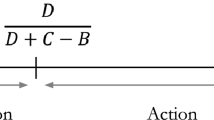Abstract
We studied 4,543 male physicians to assess accuracy of self-reported cholesterol level. The rate of accurate reporting improved over 14 years (25% to 62%), while failing to report a cholesterol level decreased. Overweight, current or past smoking, and physical inactivity were significantly associated with not reporting or inaccurately reporting cholesterol level. Though an increasing proportion of physicians accurately reported their cholesterol level over time, those at increased risk for developing cardiovascular disease tended to underestimate or fail to report their cholesterol level. Knowledge may be a critical factor in empowering physicians and patients to advocate for and adopt healthier lifestyles.
Editors’ Strategic Implications: Rates of sedentary behavior and obesity in the U.S. continue to rise. In this promising study with a large sample, a longitudinal design, and multi-method assessments, we find that—even among this sample of highly educated medical professionals—those individuals who are at greatest cardiovascular risk might require different types of monitoring, motivational interventions, or health education.
Similar content being viewed by others
References
Carleton, R. A. (1983). Coronary heart disease and human behavior. Preventive Medicine, 12(5), 610–618.
Cooper, R., Desvign-Nickens, P., Fortmann, S. P., Friedman, L., Havlik, R., Hogelin, G., et al. (2000). Trends and Disparities in Coronary Heart Disease, Stroke, and Other Cardiovascular Diseases in the United States. Circulation, 102, 3137–3147.
Executive Summary of The Third Report of The National Cholesterol Education Program (NCEP) Expert Panel on Detection, Evaluation, And Treatment of High Blood Cholesterol In Adults (Adult Treatment Panel III). (2001). Journal of the American Medical Association, 285(19), 2486–2497.
Factors Related to Cholesterol Screening and Cholesterol Level Awarenss–-United States. (1989). Morbidity and Mortality Weekly Report, 39(37), 633–637.
Final Report on the Aspirin Component of the Ongoing Physician’s Health Study (1989 July). New England Journal of Medicine, 321, 129–135.
Frank, E., Winkleby, M. A., Fortmann, S. P., Rockhill, B., & Farquhar, J. W. (1992). Improved cholesterol–related knowledge and behavior and plasma cholesterol levels in adults during the 1980s. Journal of the American Medical Association, 268(12), 1566–1572.
From the Centers for Disease Control. Factors related to Cholesterol Screening, Cholesterol Level Awarenss–-United States–-1989. (1990). Journal of the American Medical Association, 264(23), 2985–2986.
Gould, A. L., Rossouw, J. E., Santanello, N. C., Heyse, J. F., & Furberg, C. D. (1998). Cholesterol reduction yields clinical benefit: impact of statin trials. Circulation, 97(10), 946–952.
Healthy People 2010: Understanding and improving health. (2000). Washington, DC: U.S Department of Health and Human Services.
Heath, G. W., Fuchs, R., Croft, J. B., Temple, S. P., & Wheeler, F. C. (1995). Changes in blood cholesterol awareness: Final results from the South Carolina Cardiovascular Disease Prevention Project. American Journal of Preventative Medicine, 11(3), 190–196.
Heath, G. W., Vartiainen, E., & Wheeler, F. C. (1993). Self-reported frequency of serum cholesterol testing, awareness of test results, and laboratory cholesterol values in two South Carolina communities. Public Health Reports, 108(4), 465–470.
Hunink, M. G., Goldman, L., Tosteson, A. N., Mittleman, M. A., Goldman, P. A., Williams, L. W., et al. (1997). The recent decline in mortality from coronary heart disease, 1980–1990. The effect of secular trends in risk factors and treatment. Journal of the American Medical Association, 277(7), 535–542.
Klag, M. J., Mead, L. A., Ford, D. E., Pearson, T. A., Levine, D. M. (1993). Validity of physicians’ self-reports of cardiovascular disease risk factors. Annals of Epidemiology, 3(4), 442–447.
Lipid Research Clinics Program: Manual of Laboratory Operations, vol. 1. Lipid and lipoprotein analysis. (No. NIH 75-628) (1974). Washington DC: DHEW Government Printing Office.
Nash, D. T. (1982). Hyperlipidemia therapy: Can it prevent coronary atherosclerosis? Postgraduate Medicine, 72(2), 207–211.
National Cholesterol Education Program. Report of the Expert Panel on Population Strategies for Blood Cholesterol Reduction: Executive summary. National Heart, Lung and Blood Institute, National Institutes of Health. (1991). Archives of Internal Medicine, 151(6), 1071–1084.
Nieto, F. J., Chambless, L. E., Zhong, M., Ceraso, M., Romm, F. J., Cooper, L., et al. (1995). Population awarenss and control of hypertension and hypercholesterolemia. The Atherosclerosis Risk in Communities Study. Archives of Internal Medicine, 155(7), 677–684.
Pieper, R. M., McGovern, P. G., Shahar, E., Blackburn, H., Luipker, R. V. (1997). Trends in cholesterol knowledge and screening and hypercholesterolemia awareness and treatment, 1980–1992. The Minnesota Heart Survey. Archives of Internal Medicine, 157(20), 2326–2332.
Randomised trial of cholesterol lowering in 4444 patients with coronary heart disease: The Scandinavian Simvastatin Survival Study (4S) (1994). Lancet, 344(8934), 1383–1389.
Schucker, B., Wittes, J. T., Santanello, N. C., Weber, S. J., McGoldrick, D., Donato, K., et al. (1991). Change in cholesterol awareness and action. Results from national physician and public surveys. Archives of Internal Medicine, 151(4), 666–673.
Stampfer, M. J., Sacks, F. M., Salvini, S., Willett, W. C., & Hennekens, C. H. (1991). A prospective study of cholesterol, apolipoproteins, and the risk of myocardial infarction. New England Journal of Medicine, 325(6), 373–381.
Author information
Authors and Affiliations
Corresponding author
Rights and permissions
About this article
Cite this article
Scranton, R.E., Sesso, H.D., Glynn, R.J. et al. Characteristics Associated with Differences in Reported Versus Measured Total CholesterolAmong Male Physicians. J Primary Prevent 26, 51–61 (2005). https://doi.org/10.1007/s10935-004-0991-z
Issue Date:
DOI: https://doi.org/10.1007/s10935-004-0991-z




